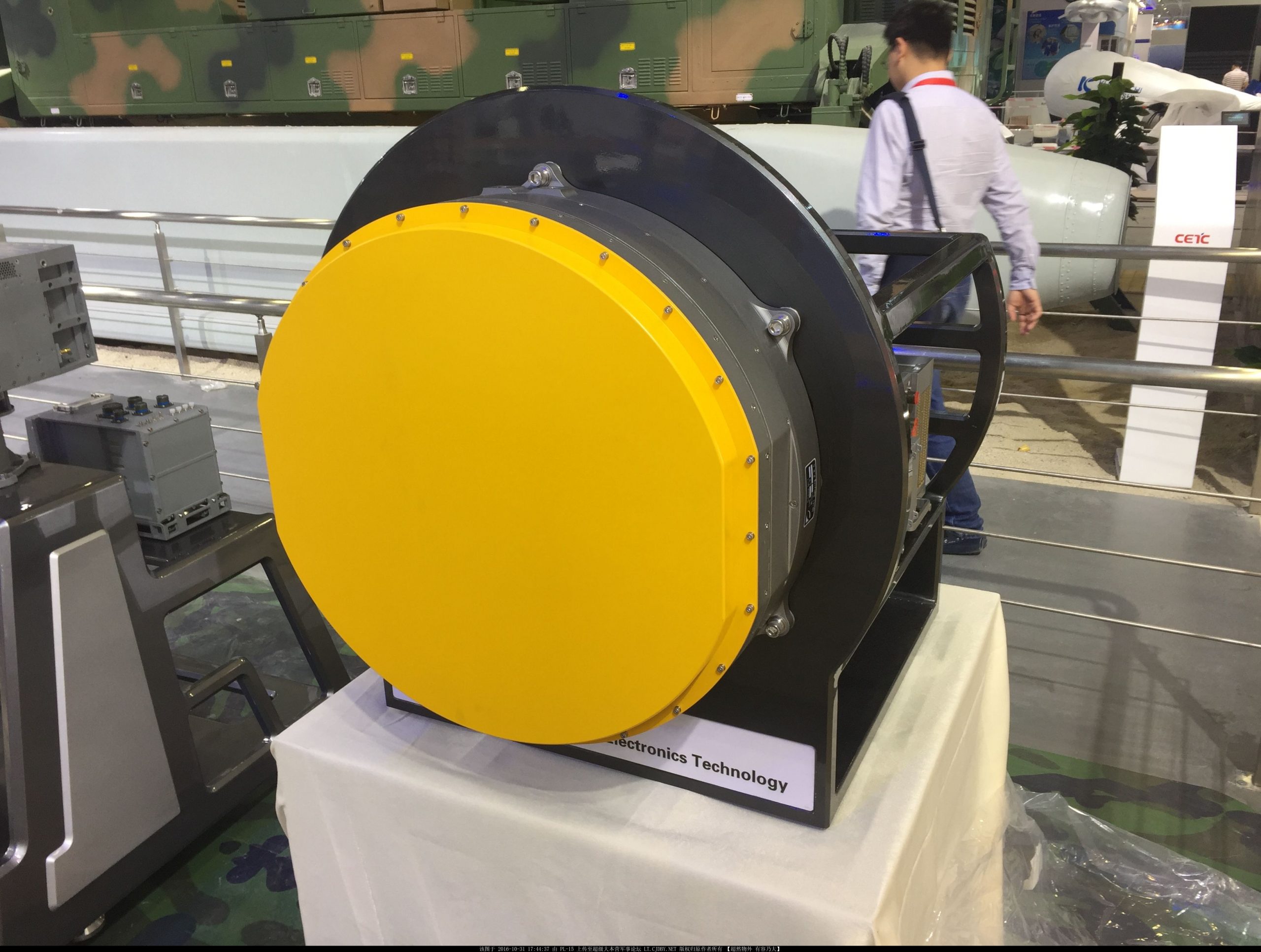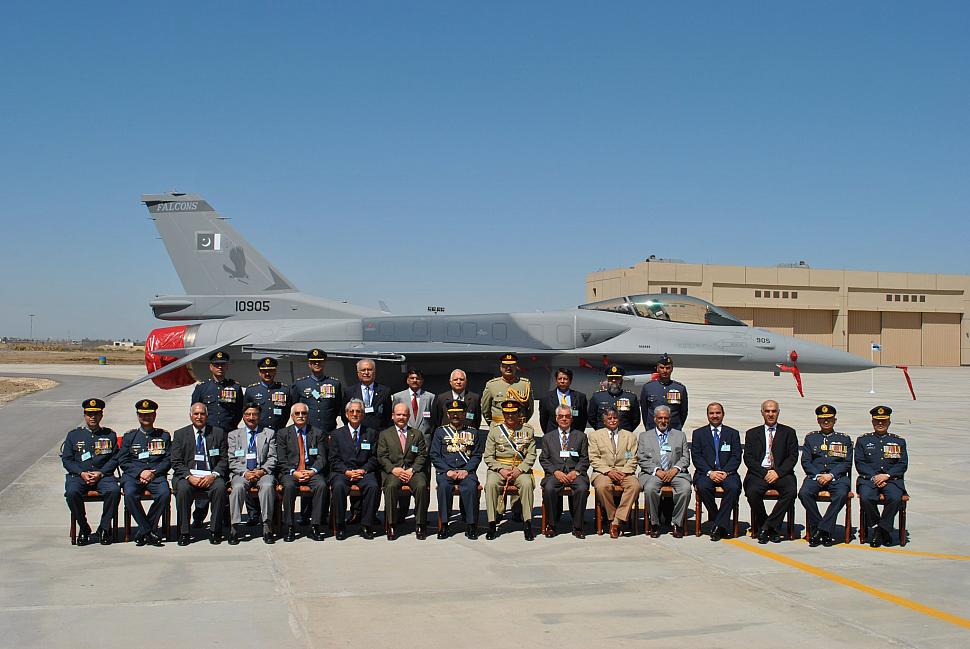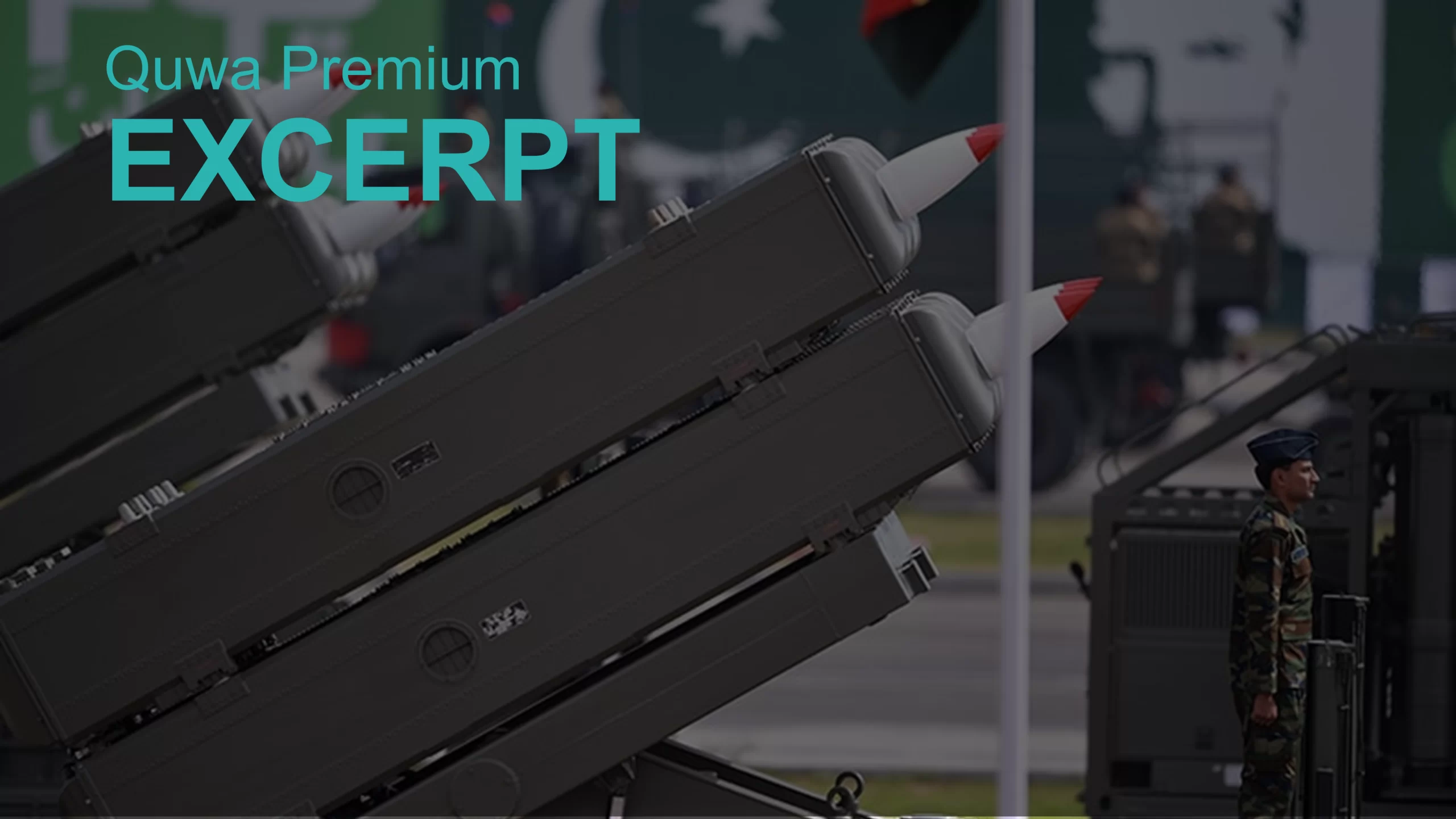2546Views 17Comments

KLJ-7A: Proposed AESA radar for the JF-17 Block-III
The Nanjing Research Institute of Electronics Technology (NRIET) has unveiled a new active electronically-scanned array (AESA) radar at the Zhuhai Air Show, reportedly for use with the JF-17 Block-III.
Designated the KLJ-7A, it appears that NRIET will market the new AESA radar as a replacement to the KLJ-7 and KLJ-7V2 currently onboard the JF-17 Block-I and Block-II, respectively.
The KLJ-7A’s feature list includes track while scan, multi-object targeting and multi-target engagement, and synthetic aperture radar with ground moving target identification (among others).
Specific details, such as the materials or number of transceiver modules (TRM), were not listed. According to Henri Kenhmann (via East Pendulum), NRIET’s deputy director Wang Hongzhe stated that the radar has a maximum range of 170 km (likely in reference to a radar cross-section of 5m2).
Kenhmann also reported that the KLJ-7A can simultaneously track 15 targets and engage four.
Notes & Comments:
Based on the photos being circulated on several online discussion mediums, the KLJ-7A appears to be a small radar suite, one appropriate for the JF-17’s limited internal space. The name may indicate that the KLJ-7A is a direct development of the KLJ-7, but the images suggest that the KLJ-7A is a distinct design. In other words, it does not appear that the KLJ-7A and KLJ-7/V2 share anything beyond the name.
The inclusion of an AESA radar is the centerpiece of the JF-17 Block-III program, the first major iterative update of the JF-17 Thunder lightweight multi-role fighter.
In general, an AESA radar would provide greatly improved electronic counter-countermeasure (ECCM) capabilities, meaning, higher resistance to enemy active electronic warfare (EW) jamming.
This is achieved using hundreds of solid-state TRMs, each serving as a ‘micro-radar’ of sorts transmitting a unique signal simultaneously. For jamming pods, this makes the task of identifying, recording and re-transmitting all those signals, which change with each pulse, difficult.
This method also helps with shielding the radar from being detected by enemy radar warning receivers – i.e. giving it a ‘low-probability-of-intercept.’
Although Leonardo-Finmeccanica’s Vixen AESA radar line was identified as an option by PAF officials (during the 2015 Paris Air Show), NRIET’s KLJ-7A seems like it was designed with the JF-17 directly in mind, and as such, could potentially offer a superior balance of performance, integration complexity, and price.



17 Comments
by Freebird
Good news, go Pakistan.
by KM
With so many high level Military visits between Pakistan & Italy (specially our Air Chief), I thought we might be choosing Leonardo-Finmeccanica’s AESA for JF-17.
by Sami Shahid
Pakistan should also look for a Mach 1.8 engine for JF-17.
by bill
May be EW suit and majorly Typhoons expected purchase are reasons for continuous visits further Italian radar may still be on card for export customers. Whatever case may be Pak should definitely use tailor made AESA exclusively for future JF17s to be used domestically and different radar should be offered to foreign clients to maintain degree of secrecy and competitiveness.
by Salman Khan
And for the record, this must be a new radar since you can’t just update a mechanical radar into an AESA.
by Salman Khan
Bilal, I read on Chinese news websites their claim that this radar is comparable to the latest American ANs on the F-35 and the F-16V! Could you write a more detailed article on this radar’s capabilities compared to other radars?
by AMAN
Salman can you give me link of the news website ?
Please!!!!!
by GhalibKabir
if above claims are true then this X band KLJ7-A should be comparable to the Russki Zhuk AE and Israeli EL/M 2052. It is highly likely this is a reasonably capable radar. Without details on the nature of the T/R modules (we know there are 1150-1200) & other details such as processing efficiency and MMIC technology it might not be possible to judge further..
The AESA capability rank is (the Captor E AESA and Raven SELEX AESA are conceptual yet)
US> France> (Israel=China)> Russia (excl. the L-X band N036/079) in all probability…
for the JF-17 the question is the RD-33 engine, what happens if the AESA is going to be fitted…
I assume the Chinese have considered that part already.. may be re-engine it with the FADEC RD-33MK with nearly 10% extra thrust and use more composites to reduce wing load etc..
by Salman Khan
http://www.chinatimes.com/newspapers/20161102000736-260301
That’s not the only one. A Google News search will show all chinese news sites making the same claim!!
by Abdul Rashid
That sounds promising, Salman. I read the Google translate of the post so not sure how accurate the info is.
How fluent are you in Turkish? Maybe you ought to read some Turkish defence websites and keep us in the loop with interesting info/rumours!
by Salman Khan
My Turkish is OK but it will take me some time to polish the rough edges. But I think I can try nevertheless.
by Abdul Rashid
Cool, keep trying! I hope to start learning either Turkish or Farsi soon.
by Bilal Khan - Quwa
Elettronica’s ECM pod and Leonardo-Finmeccanica’s IRST could still be an option.
by Abdul Rashid
It would be interesting to know how compact the KLJ-7A is and the relative size difference between it and the KLJ-7/V2. I have tried without success to get a very rough idea with a quick net search to find photos of people standing next to both radars. With the KLJ-7A apparently designed from the onset for the JF-17 hopefully the modification to the nose-cone to accommodate it and the cost of it’s design change will be minimal. In particular, I’m hoping NRIET are not too far away from being able to produce a version suitable for integrating on to JF-17 Block I and II.
by Abdul Rashid
Aman, the kind of details I’d like to know is the dimensions, weight, etc. of the various units to try and get an idea of the prospect of KLJ-7A getting integrated on to Block I and II. Or at least an idea of how close the Chinese might be to developing a newer, more compact version suitable for the older JF-17’s. When I say “an idea” I mean just speculation not any definite answers.
Of course we can patiently wait until all the relevant information is officially released but really Aman, come on now seriously, would waiting for official info release be nearly half as fun as trying to find out as much as possible now and speculating the future and then later seeing how far off or close to the mark the speculation was?
BTW, I didn’t ignore your other comment. I read it but not posted it. Talking about beautiful Russian aircraft on Quwa is one thing, but beautiful Russian ladies? LOL, somehow I don’t think Bilal would approve!
by MT
Israel made their 1st AESa radar in last decade. Chinese product isnt fitted on any production version of J10B. So there is too much doubt on true capability of chinese Aesa radar
by Salman Khan
On multiple chinese websites, it is stated that the detective range of this radar is increased by 65% and the figure given is 170 km. I think this figure must be for the radar cross-section of 3m2 since the 170 km is the 65% increase on the 110 km range of KLJ-V2 in 3m2 mode.